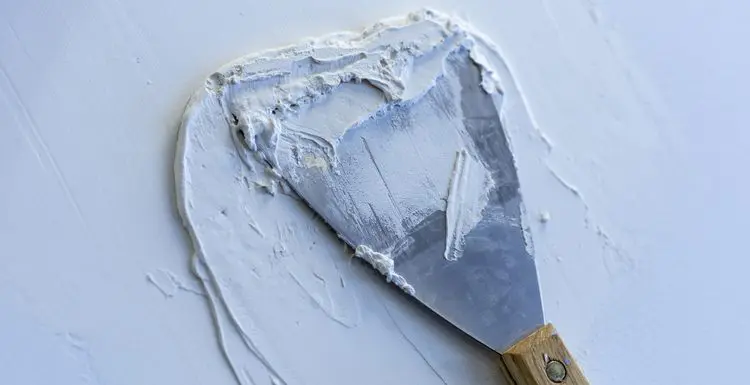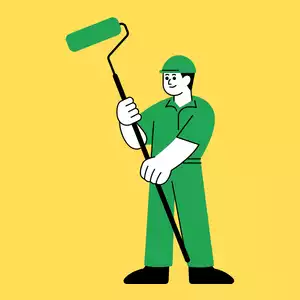When you’re designing the décor of your house, you’re not limited to furniture, flooring, and color choice. The texture of your walls is an underappreciated way to bring out a certain character in your home décor.
So if you’re redoing the walls in one or more rooms of your house, you should consider choosing a drywall texture type that is creative and unique.
18 Modern Drywall Texture Types
Many people just assume they should stick with the standard drywall texture of a classic smooth finish.
There’s nothing inherently wrong with this, but you shouldn’t shy away from more creative textures because you think they are difficult.
With just a little bit of knowledge and practice, you could easily give your walls a creative texture styled like sand swirl, orange peel, or popcorn.
The more advanced techniques should probably be left to a professional, but many drywall texture types are easy to learn and can be accomplished by a novice.
You can practice on more hidden spots and pick up some skills in no time.
Changing up textures is also a great strategy for covering up cracks and other cosmetic problems in your sheetrock.
So if you’re redoing some walls at home and want to get creative with the drywall textures, you should consider choosing from one of these great 18 modern drywall texture types.
1. Plain White Wall Texture
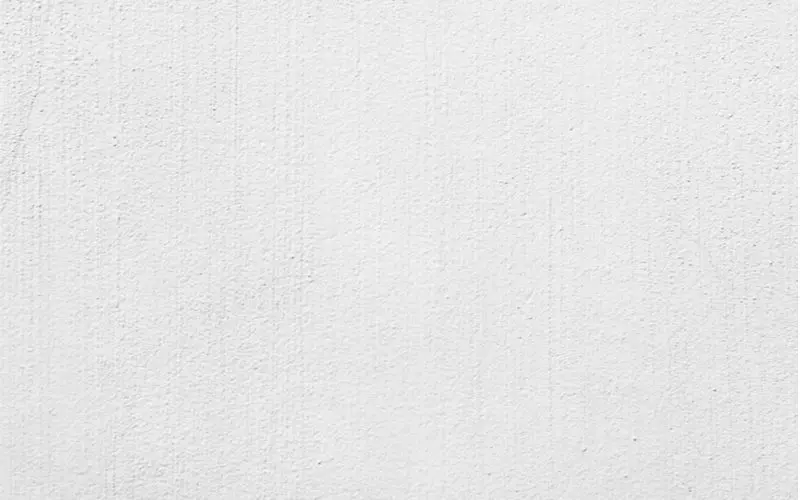
Arigato/Shutterstock
If you’re not someone who wants to go too fancy and creative with your wall texture, this plain white wall could be an option for you.
While not perfectly smooth, the plain color hides most of the texture, and it comes nowhere close to the rougher look of something such as popcorn or sprayed sand textures.
2. White Wall With Sprayed Texture
T Caddidy/Shutterstock
This example is another one that showcases a more subtle way to add texture to your drywall. It is a bit rougher than the first plain white example, but again, it is not at all as rough as the popcorn texture.
The wall gives the sense that the paint was splattered on in a messy yet controlled way, and the plain white color keeps the texture subtle and hidden when far away.
3. Concrete-Textured Wall
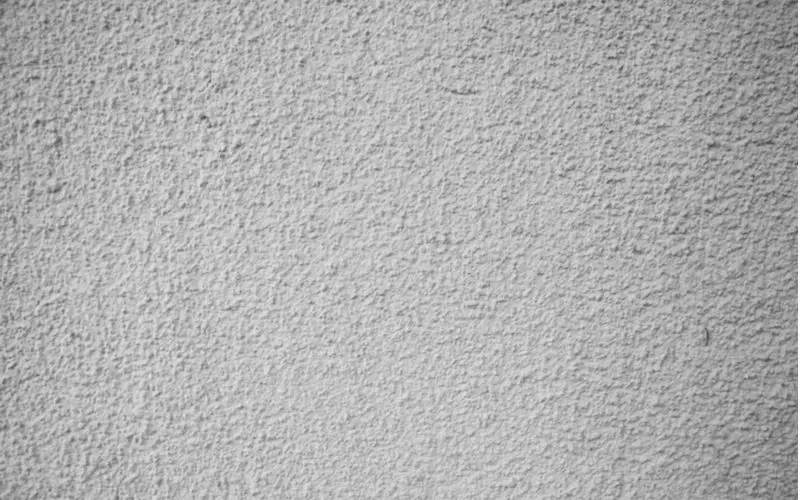
Firat Cetin/Shutterstock
One classic drywall texture is to mimic the texture of an unfinished concrete wall. You’ve probably seen this type of texture on the concrete walls of unfinished basements, and it can be an easy way to bring some character to the drywall.
The concrete texture is similar in style to the spray sand texture, which you’ll be able to check out in a future example. The concrete texture is more interesting than smooth drywall, but still on the subtle side.
4. Flattened/Knocked-Down Texture
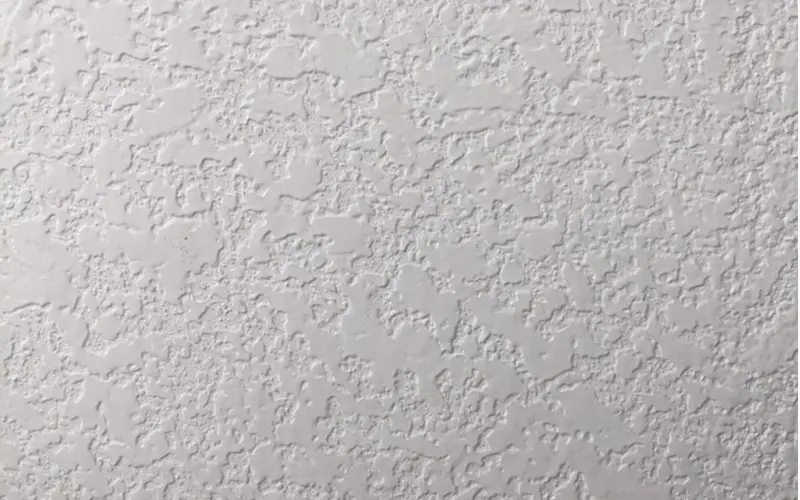
KitchenSink/Shutterstock
This example showcases a rougher texture that resembles a splattered look. But the knocked-down texture gets its name because the bumps are smoothed out ‒ at least relatively speaking ‒ so that no obvious high points pop out.
As you can see, there are still lots of small details to the texture, and the flatness of the larger bumps resembles the orange peel texture that you’ll see in a later example.
5. Bumpy Concrete Texture
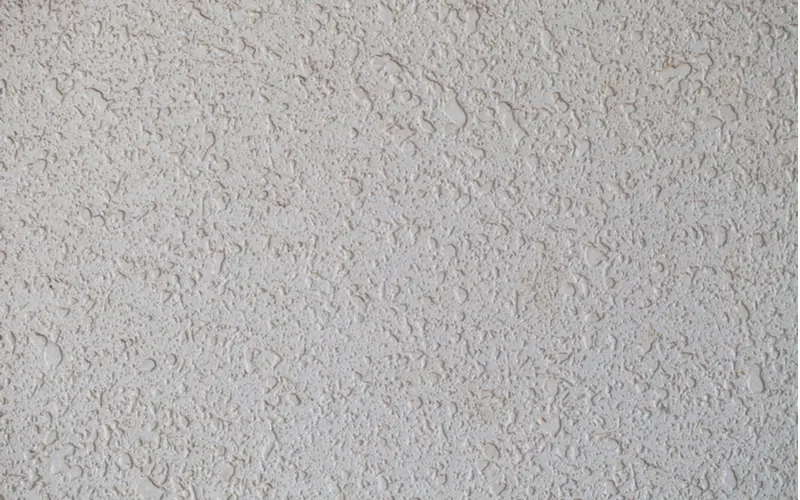
Chaikom/Shutterstock
This bumpy concrete texture is similar in look to the previous concrete example, but it has far more variety in the size and depth of the bumps.
Both of the concrete examples you’ve seen so far are highlighting the fact that you can implement the concrete texture in a variety of ways.
If the previous concrete texture was a bit too subtle, consider the extra-bumpy texture showcased here.
6. Brown Concrete Texture With Small Even Bumps
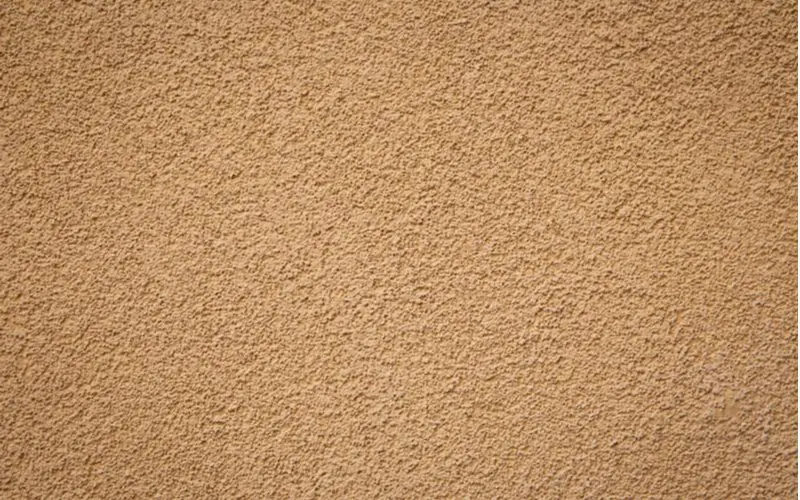
Kaloyan Nikolov/Shutterstock
If you liked the concrete texture but aren’t into the idea of a white-colored wall, consider the look of this brown concrete texture. It resembles the color created with mud or plaster.
But it doesn’t have the wide strokes or uneven bumps that the skip trowel texture can have. The bumps in this concrete texture are small and even, and they almost disappear at a far enough distance.
7. Plaster Relief Drywall Texture
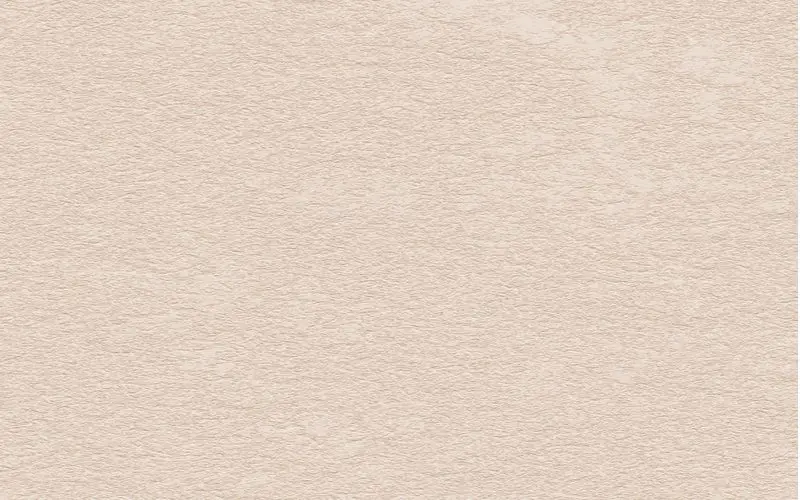
Mik Ulyannikov/Shutterstock
The plaster relief texture showcased in this example highlights the fact that even an intense texture can be flattened into a more subtle look.
This texture achieves its subtle look by using the knockdown technique used in a previous example. Even really intense slap brushing can be made subtle with a knockdown technique to flatten it out.
8. Slap Brush/Crow’s Feet Texture
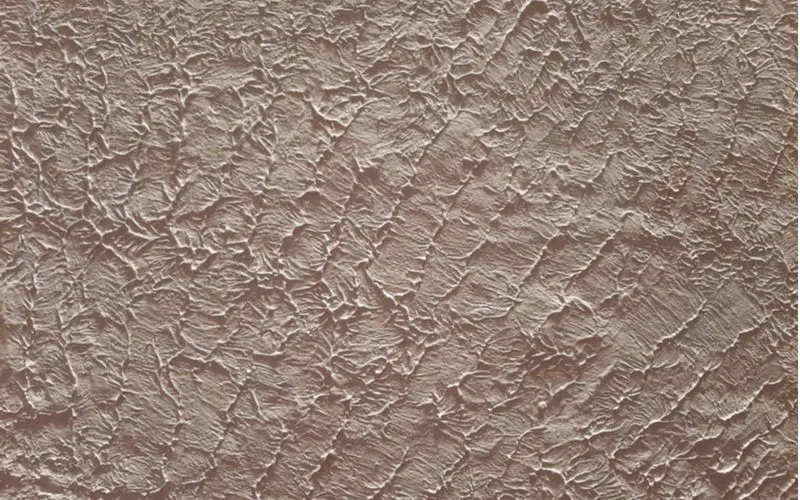
Claudy16/Shutterstock
The slap brush technique shown in this example brings you into a more intense category of drywall textures. Sometimes called a crow’s feet or stomp-brush texture, slap brushing creates large bumps that are anything but subtle.
You can accomplish this technique easily by applying a thin layer of mud to your wall and then slapping the wall repeatedly with a hard-bristled brush. Slap brushing is flexible and can be repeated until you like the texture.
9. Gray Popcorn Texture
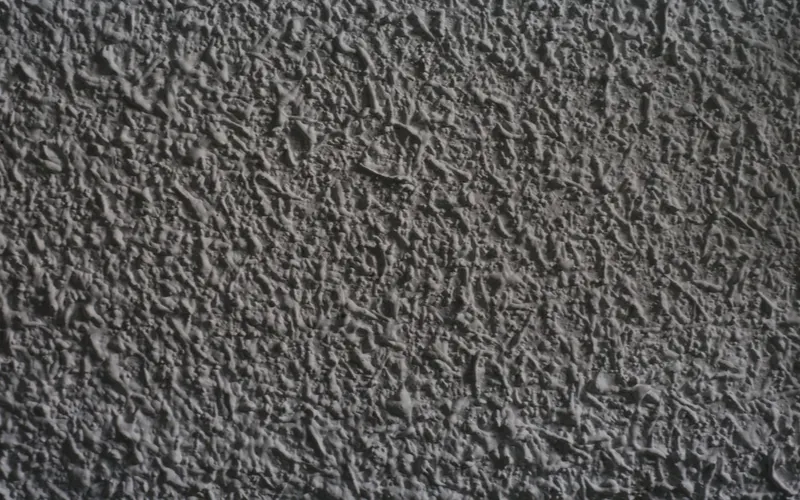
Paula GC/Shutterstock
Although the popcorn texture could theoretically work on walls, people most commonly use this texture on ceilings. It’s an extremely popular drywall texture for multiple reasons, the most important being that it is low maintenance.
Popcorn texture covers imperfections and, after painting, needs little to no maintenance. And this texture comes with the bonus of being great at dampening sound!
10. Smooth White Wall
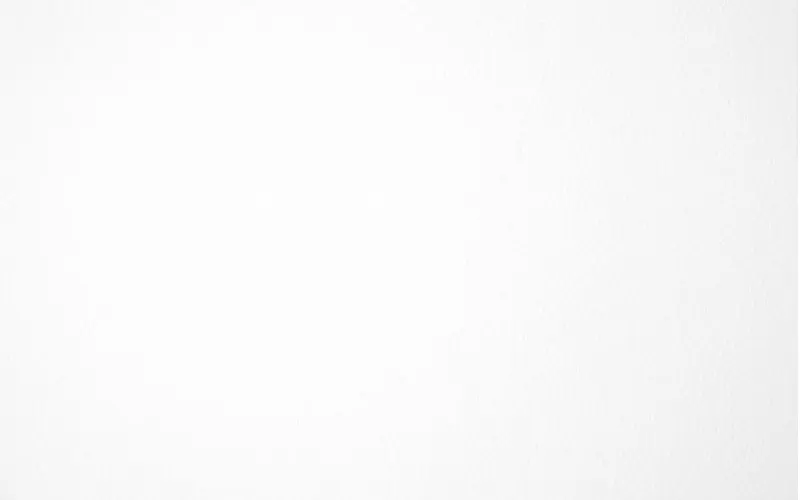
ArtKio/Shutterstock
If you’re considering all of your options for drywall textures, you should not leave out the most obvious ‒ the simple look of a smooth finish. But the simplicity of the smooth finish doesn’t mean it’s simple to achieve or inexpensive.
Achieving a smooth finish as pictured here requires lots of coats, great technique, and lots of sanding. But if you want clean and modern décor, you should consider the smooth texture.
11. Large Swirls
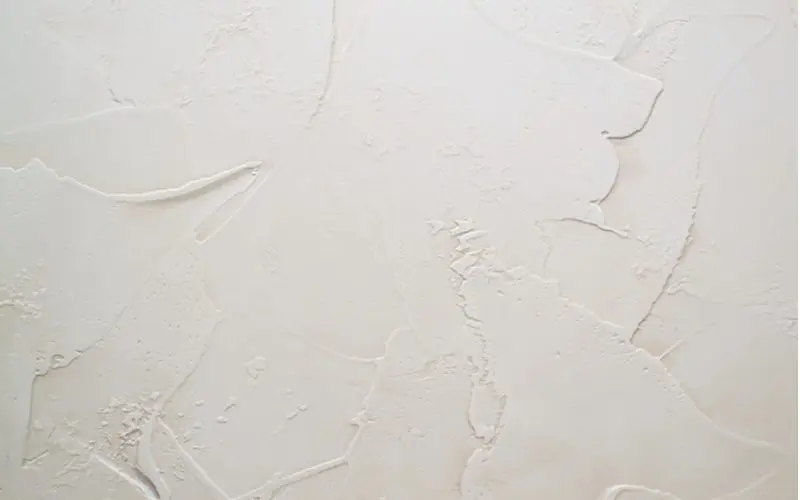
e-Kis/Shutterstock
There are a variety of ways you can use a swirling texture on your wall, and this example showcases how the large swirls look.
You can make the large swirls in this example by using a wide and broad stroke, which gives the waves a texture that resembles cream.
These large swirls look particularly artsy and, when done correctly, can add lots of beauty to your room.
12. Orange Peel Texture on White Wall
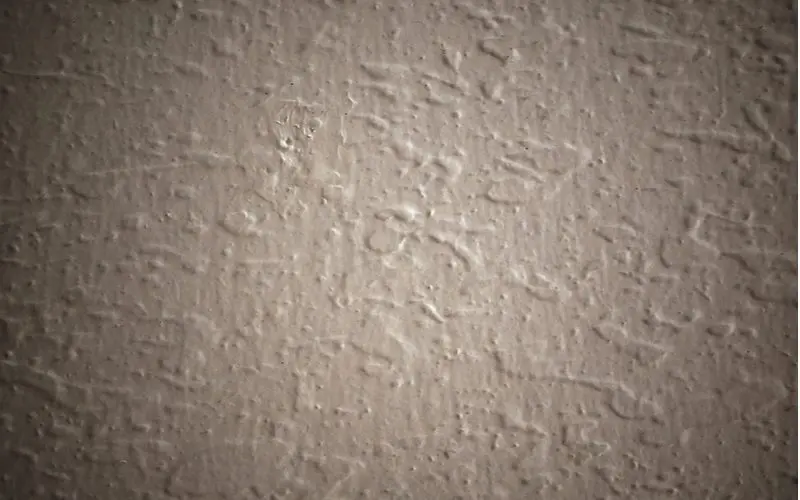
Jmrainbow/Shutterstock
The orange peel texture, similar to the previous knocked-down style, is a popular choice because it looks beautiful in a wide variety of room types, it is flexible in how rough you make the texture, and it is relatively easy to create.
The reason it is easier than slap-brushing texture is because of the speed. You use either a roller or an air compressor to achieve the rough orange peel consistency.
13. Hair Comb Texture
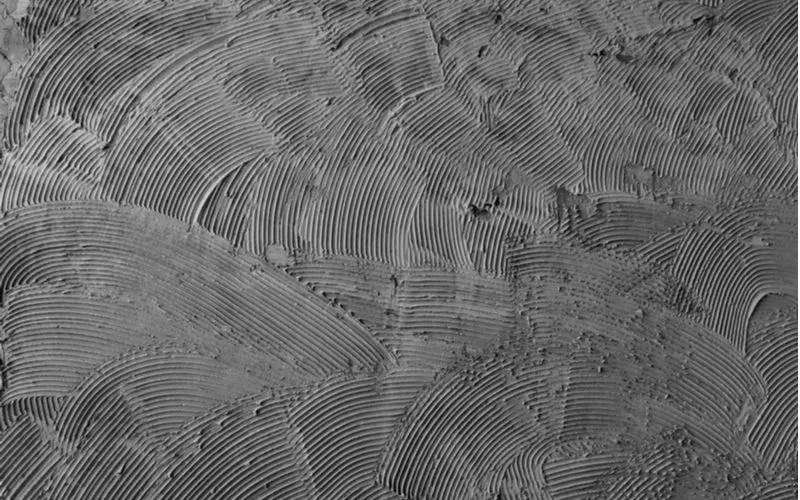
RachenStocker/Shutterstock
As the name suggests, the combed texture looks like somebody brushed a comb through the wet plaster as it was drying. The comb texture is for people who like to get creative and bring a unique style to their home décor.
While this particular example showcases overlapping patterns of arcs, you are by no means limited to that pattern. Get creative with the combed texture and use whatever shapes you want!
14. Brown Stucco Texture
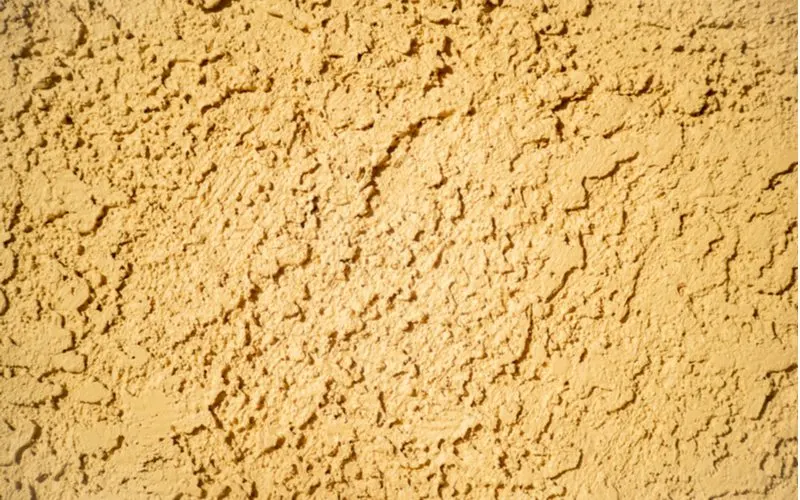
Dominic Gentilcore PhD/Shutterstock
This example shows off the stucco texture, also referred to as the skip trowel texture. The base material consists of mud or plaster, and you shape the stucco texture by holding a knife at the right angle to skip across the wall.
This process creates the thick/rough surface in the picture. Stucco texture is creative and fancy. But because you have to apply the texture by hand, you should be aware that it takes a lot of time and patience to get it right.
15. Golden Venetian Plaster
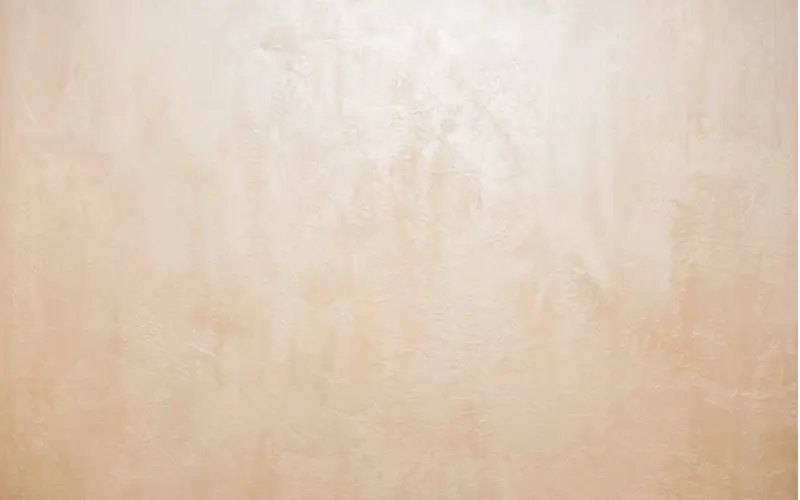
Mila_chen/Shutterstock
Compared to most of the other drywall textures in this article, the Venetian plaster finish is one of the more fancy and more expensive options.
The style has been around a long time, and you can see Venetian plaster used in lots of famous/high-end architecture. It is a laborious process that uses many layers mixed with marble dust, making it so expensive.
16. Knockdown Texture
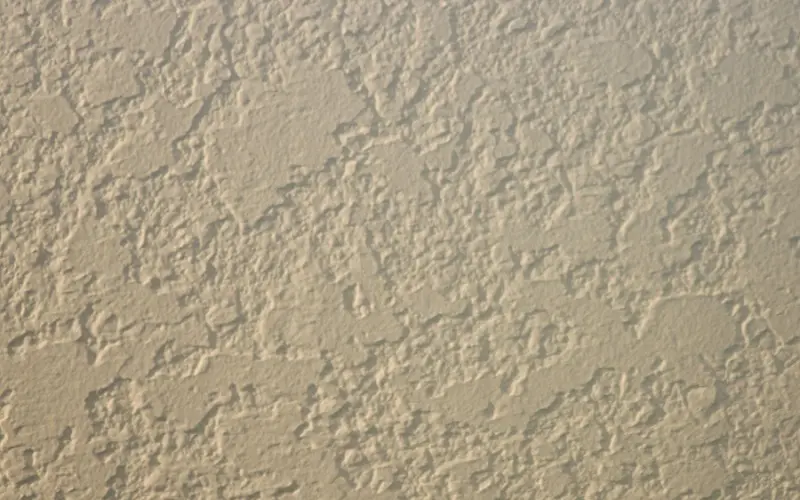
Pinterest.com
This texture is achieved by spraying joint compound onto the drywall, then using a trowel to flatten or “knock down” the peaks, resulting in a mottled, textured look.
The texture can be adjusted to be more or less pronounced, making it a versatile option that works well in a variety of spaces.
17. Swirl Texture
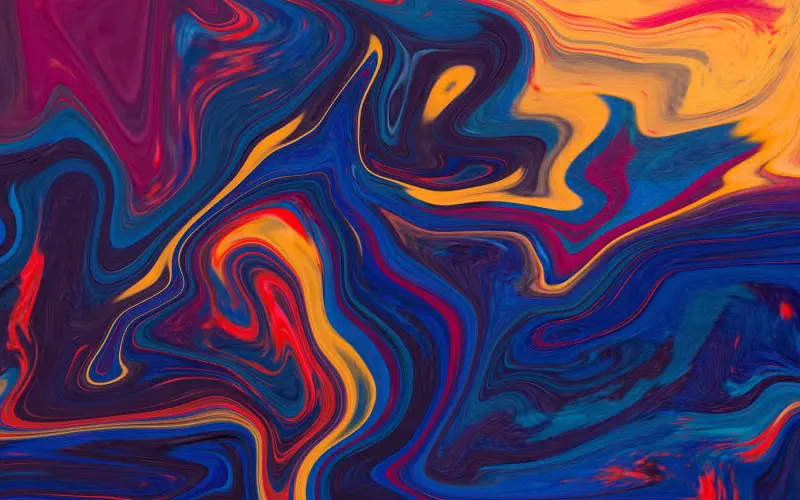
Unblast.com
Swirl texture involves using a trowel or brush to create a swirling pattern on the drywall.
It can be subtle or dramatic, depending on the application technique and can add a touch of elegance and sophistication to any room.
18. Skip Trowel Texture
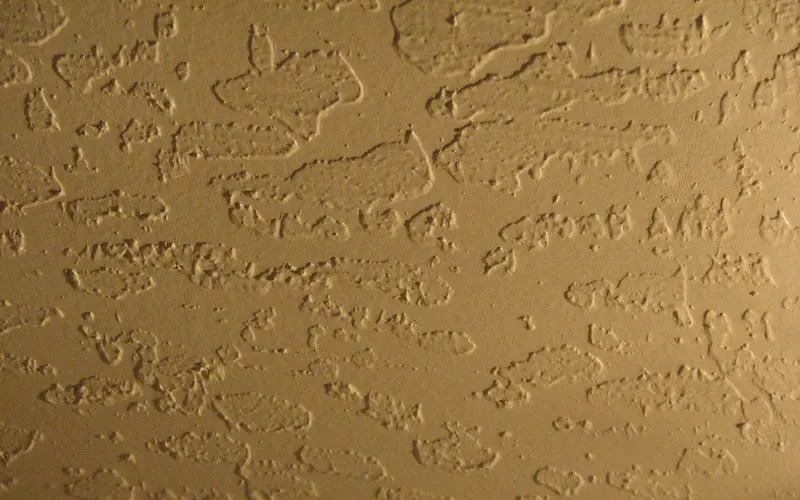
peckdrywallandpainting.com
This texture involves using a trowel to skim drywall mud onto the surface, creating a mottled, irregular pattern with peaks and valleys.
The final look can vary depending on the amount of mud applied and the technique used to apply it. Skip trowel texture is a popular choice for contemporary and modern spaces.
We partnered with Networx to help you find local painters in your area. Click the button below to get a FREE quote.
Things to Consider
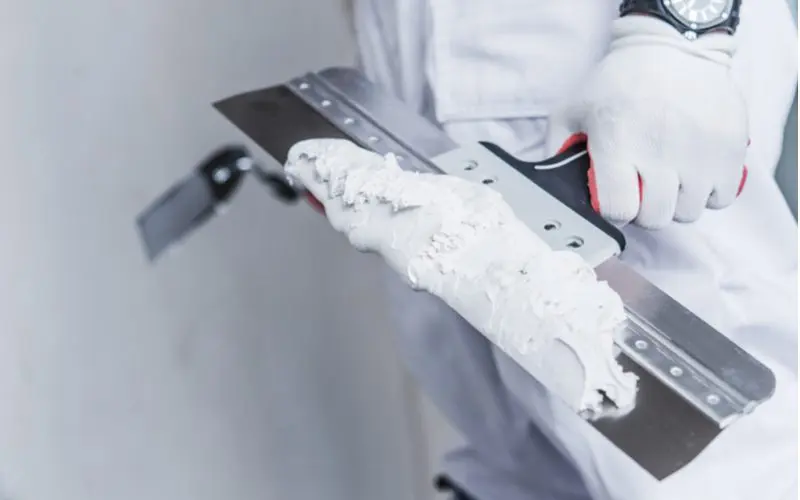
Virrage Images/Shutterstock
Now that you have some visual examples of the different types of drywall textures out there, you should have an easier time deciding which style will work for you.
Many of the examples above, because they use a very similar technique, are close relatives. And sometimes, the differences are only a matter of degree. The knocked-down texture compared with the orange peel texture showcases this fact.
Whatever you decide on for the walls of your house, know that all of the examples above are flexible.
You can customize the sizes of swirls, the shape of the combed texture, and the amount of flattening in the knocked-down style.
Especially if you are a creative type, give yourself the freedom to be experimental with how you customize the texture you pick.
In whatever way you end up making use of drywall textures in your house, keep some of these tips in mind as you go:
- Drywall texturing can be a great do-it-yourself project to have fun being creative and adding some new décor to your walls. As long as you are willing to learn, you can accomplish most of these techniques.
- In whatever room you will use drywall textures, decide ahead of time what general décor you want. Having a plan will help you to choose the right style and how to implement it.
- Remember that sometimes the smooth finish will look best in your room, even though it can seem boring compared to other textures. Sometimes less is more.
- Texturing your walls adds personality to a room, and combined with the right furniture and colors, you can use wall textures to bring your home décor to life.
- Texturing does not need to be a purely decorative or artistic decision ‒ the right textures can also be a strategy for hiding imperfections and lessening the future maintenance you will have to do.
- Many textures, such as swirls, knocked-down, orange peel, and comb, are highly customizable, and you can let yourself get creative with them. Follow the general technique for making them happen, and then have the courage to go in your own direction.
Do-It-Yourself Drywall Textures
If you have zero experience with painting and drywall, it might be best to leave texturing up to a professional who does it all the time.
A good contractor will hear your plans and creative ideas and can customize a texture style for you.
But if you are eager to learn or already have enough experience to give it a try, consider going with one of the drywall textures that is easiest to do on your own.
For example, trying the fancy Venetian plaster finish might not be a great idea if you don’t have the experience. But some of the textures that are easier to work on for amateurs include:
- Orange peel
- Spray sand texture
- Comb
And if you are on a tight budget, DIY options allow you to work at your own pace, save some money, and have fun learning a new skill.
Which Modern Drywall Texture Type Will You Choose?
Hopefully, you now have a good idea of how much style and creativity drywall textures can bring into your house.
The textures range from subtle and cheap to lavish and expensive, and you can customize most of them to fit your specific décor.

